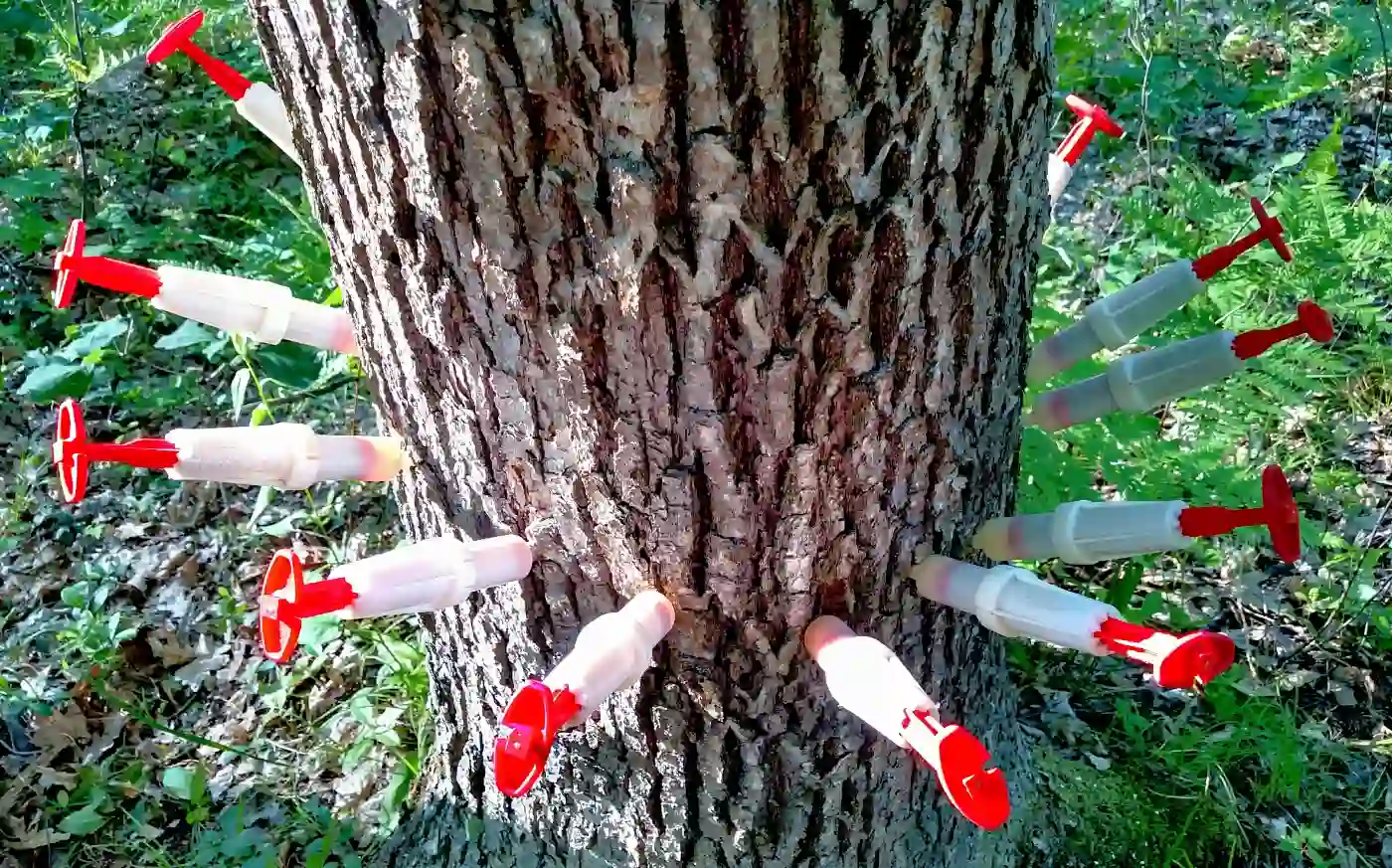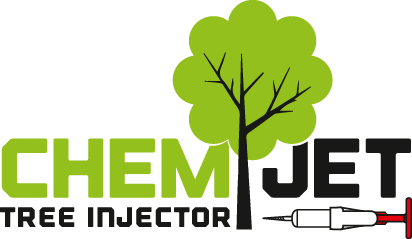How Chemjet Works
Environmentally Sound
Tree injection uses the natural circulation of the tree to distribute pesticides, fungicides and fertilizers to the areas where treatment is needed without releasing chemicals in the environment (as opposed to spraying or drenching the ground with chemicals). With direct injection into the circulatory system of a tree, a much lower volume of chemical is needed because it all goes into the tree, leaving none on the ground or on exterior tree bark for exposure to unintended receptors such as beneficial insects (like honey bees), animals or people.

Tree Injection using Chemjet
- The Chemjet® Tree Injector is a spring-loaded syringe-like device, with a 20mm tapered nozzle. The chemical is drawn through the nozzle into the chamber of the injector in measured 10, 15 or 20ml quantities. The injector handle is pulled back to energize the spring pressure can be locked open at 20 ml by twisting the handle in a clockwise direction.
- Holes are drilled into the tree using a 11/64 bit to a depth of about one inch, and the Chemjet® nozzle is pressed into the hole by hand (no hammering) to make a tight seal. Note: you do not have to twist while inserting! While holding the Chemjet® in place, the red handle is pulled back slightly then turned counterclockwise to allow the spring pressure to inject chemical into the tree. The injector is then left unattended to inject at a steady low pressure of about 20 PSI which does not damage the inner bark layers, and allows discharge of chemical into the xylem at a rate that is accommodated by the natural capacity of the tree to accept more liquid.
- Here is a brief video demonstrating how the Chemjet® is used to inject a tree. You can inject at the root flare just above the ground, or at some point up the trunk that is easier to reach. You don’t need to treat around the whole trunk at once. You can work your way around the tree over the course of a couple days with fewer Chemjets if you wish.
- The circulatory system of a tree moves water/sap up from the roots to the branches and then back down again along the inner bark. The tree takes up carbon dioxide and energy from the sun through the leaves/needles where photosynthesis makes food (carbohydrates). The food then dissolves in the sap and is carried downwards through the inner bark. This food is distributed to every living cell of the tree including the root system.
- Tapping into the natural circulatory process of a tree allows chemicals to be transported and rapidly dissipated throughout the entire tree, from the roots to the leaves, effectively minimizing waste and maximizing efficient use of treatment chemical
- Injecting chemicals into trees using the Chemjet® rather than spraying or soil drenching, is a more environmentally sound method of providing beneficial nutrients and treatment chemicals to trees.
Economical and Simple
With use of the reloadable Chemjet® Tree injector, tree injection treatment is very economical. The low cost of the Chemjet® Tree Injector allows a tree care worker to save time and use multiple Chemjet® Injectors simultaneously on multiple trees, or at multiple locations on one tree. For example, an injection treatment on a large tree could employ 25 injectors all at once, and be finished in minutes.

In addition. The cost efficient Chemjet® Tree Injector allows the option of do-it-yourself injection for tree care by resourceful property owners, farmers and resort groundskeepers (with proper knowledge and training). The Chemjet® Tree Injector is inexpensive, rugged, refillable and reusable. And with proper care and maintenance could be used repeatedly for many years.
Here is a testimonial from a customer who used chemjet tree injectors to treat a large number of trees on his property for oak wilt: Oak Wilt Treatment Testimonial
Step by step procedures for using the Chemjet® to treat for a variety of tree afflictions are detailed on pages linked below. If you have not used Chemjet Tree Injectors before be sure to watch this video and look through Chemjet Tips and Ideas.

